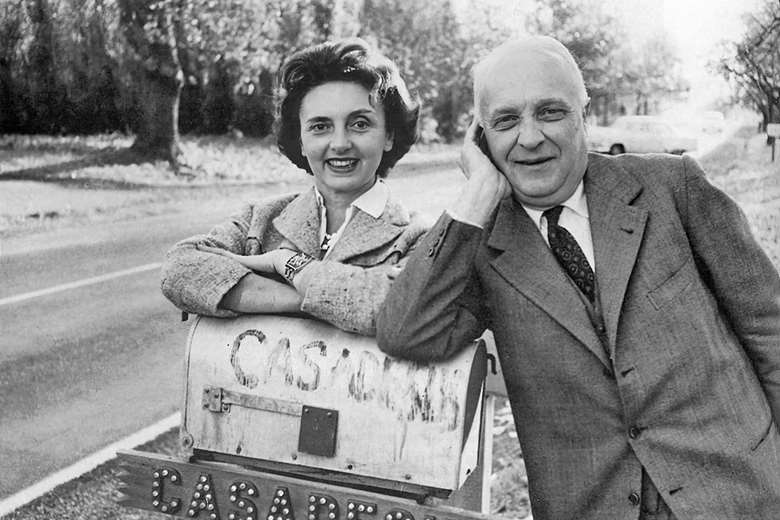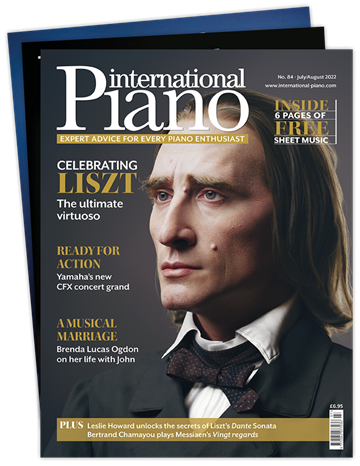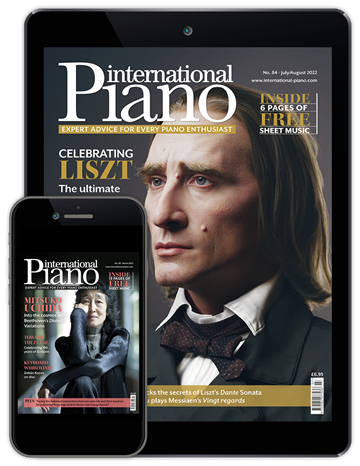Remembering Gaby Casadesus
Charles Timbrell
Friday, August 30, 2024
To mark 25 years since the death at the age of 98 of Gaby Casadesus, whose life spanned almost the entire 20th century, Charles Timbrell offers a personal tribute

It hardly seems possible that 25 years have passed since the death of the French pianist Gaby Casadesus. An appreciation of her colourful life and brilliant career seems due. Born Gabrielle L’Hôte in Marseille in 1901, she graduated from the Paris Conservatoire in 1918 and three years later married the brilliant young pianist Robert Casadesus (1898-1972). Beginning in the 1920s they performed together and separately throughout the world, appearing with such leading conductors as Bruno Walter, George Szell, Eugene Ormandy, Dimitri Mitropoulos, Paul Paray and William Steinberg.
At the Conservatoire Gaby studied in the preparatory class of Marguerite Long, who instilled an impeccable finger technique in all her students. Later, she studied in the advanced class of the famous teacher Louis Diémer and had many lessons with his temporary replacement Édouard Risler, who had studied in Germany with three of Liszt’s students. She also attended classes taught by her idol Alfred Cortot and had lessons with the German pianist and composer Moritz Moszkowski. From these very diverse teachers she acquired a distinctive style of pianism that combined the virtues of the old French school with the more progressive use of arm and weight of Cortot and the Liszt school.
In 1923 she won the Prix Pagès, which was the highest award for women pianists in France. This was the equivalent of the Prix Diémer for male pianists, which Robert had won in 1920. In a way they were predestined to form a piano duo. They often performed concertos for two pianos by Bach, Mozart and Casadesus himself, and they also played concertos for three pianos with their gifted son Jean, who died in an automobile accident in 1972. The family also included a daughter, Thérèse, who became an administrator at the Conservatoire Américain at Fontainebleau and a teacher at the Curtis Institute of Music; and a son, Guy, a company manager and record producer.
Robert’s early career gained momentum in Paris in 1924, when he performed Ravel’s complete piano works after having studied them with the composer. Extensive tours followed. In 1935 he made his American debut with the New York Philharmonic, playing Mozart’s Coronation Concerto in D major, K537; and the following year he played Brahms’s Second Concerto with the same orchestra under Arturo Toscanini. Robert was also a renowned chamber musician and performed often with the violinist Zino Francescatti, with whom he recorded Beethoven’s complete sonatas for violin and piano and the sonatas of Brahms, Franck and Debussy. Robert was also a serious composer who wrote in a mildly dissonant, neoclassical style, including symphonies, concertos and many chamber and solo works that were often played by Gaby.
Gaby’s solo repertoire in the 1920s included Balakirev’s Islamey, Beethoven’s Op 110 Sonata, Schumann’s Carnaval and Chopin’s Fourth Ballade. Her later recitals featured much Chopin, Schumann, Debussy, Ravel and, of course, Casadesus; and her appearances with orchestras included works by Bach, Mozart, Beethoven, Fauré and Saint-Saëns. From 1940 to 1944 she and Robert lived in Princeton, New Jersey, and they performed separately and together throughout the US during these years and later. She also was active as a chamber musician, appearing with the Pascal, Guilet, Juilliard and Guarneri Quartets.
In her youth Gaby played for a number of important French composers and received advice from Fauré, Ravel, Roussel, Milhaud, Moszkowski and Florent Schmitt. She later published performing editions – published by Schirmer and International Music Co – of Ravel’s Jeux d’eau and ‘Alborada del gracioso’ (from Miroirs), based on the composer’s advice to her, as well as Debussy’s Pour le piano and Images, Book 2, and Ravel’s Sonatine, Miroirs and Gaspard de la nuit.
During her long life Gaby of course came to know many famous people. As a teenager she played with Debussy’s daughter Chou-Chou, and later she heard performances by Ignacy Paderewski, Fritz Kreisler and the young Arthur Rubinstein, met Sergey Rachmaninov and Leo Tolstoy’s sister, was a friend of Nadia Boulanger, had lunch with Vladimir Horowitz, Arturo Toscanini and Bruno Walter, had cocktails with Jascha Heifetz and Josef Hofmann and played a wartime benefit concert in Princeton with the physicist and sometime violinist Albert Einstein.
It was my privilege to know Gaby for almost two decades, beginning with an interview in 1981. I later had three memorable lessons with her, on Chopin’s Barcarolle and Schumann’s Kreisleriana and Eighth Novellette. She never accepted my offers of payment, but she twice made personal requests. The first was in 1986, when she asked me to turn pages for her New York performance of Fauré’s Dolly Suite with the pianist Grant Johannesen, who had studied many years earlier with Robert. The performance got a stunning ovation and was to be her last in New York. The second favour came in 1995, when she asked me to escort her to a concert at the Théâtre des Champs-Élysées, where Brigitte Engerer was playing Schumann’s Piano Concerto. I hadn’t packed any dress clothes for my stay in Paris, but I was so honoured to be invited that I immediately went out and bought a suit for the occasion. I was also pleased to be her lunch guest several times, and I will never forget the day when she insisted on taking me by taxi to visit the offices of three Paris book publishers in the hopes of persuading one of them to publish a translation of my book on French pianists, for which she had written a beautiful preface.
In her last decades Gaby became a much sought-after teacher at the Mozarteum Salzburg, the Schola Cantorum de Paris, the Académie Internationale de Musique Maurice Ravel in Saint-Jean-de-Luz and especially at the Conservatoire Américain de Fontainebleau. She also judged numerous piano competitions, notably the Busoni and the Montreal.
Many of her recordings with Robert are still available, notably several albums of piano duets (Mozart, Schubert, Chabrier, Fauré, Debussy, Ravel, Satie, Milhaud, Casadesus), their stunning recording of Mozart’s Two-Piano Concerto, K365, with Eugene Ormandy conducting the Philadelphia Orchestra, Bartók’s Sonata for Two Pianos and Percussion and Debussy’s En blanc et noir. Also available is her fine 1947 account of Mozart’s E flat major Piano Concerto No 9, K271, with Paul Paray conducting the Orchestre Lamoureux. In addition, her memory is well served by her vivid autobiography Mes noces musicales, her performing editions and a collection of exercises entitled Ma technique quotidienne. Mes noces musicales will soon be published in English as My Musical Notes by HamiltonBook.
In her playing, her teaching and her writing Gaby was spontaneous, charming, informed and vivacious, always wholly involved in the moment. She was a treasured friend, and one of the most generous and inspiring musicians I have known.
This article originally appeared in the Autumn 2024 issue of International Piano. Never miss an issue – subscribe today












